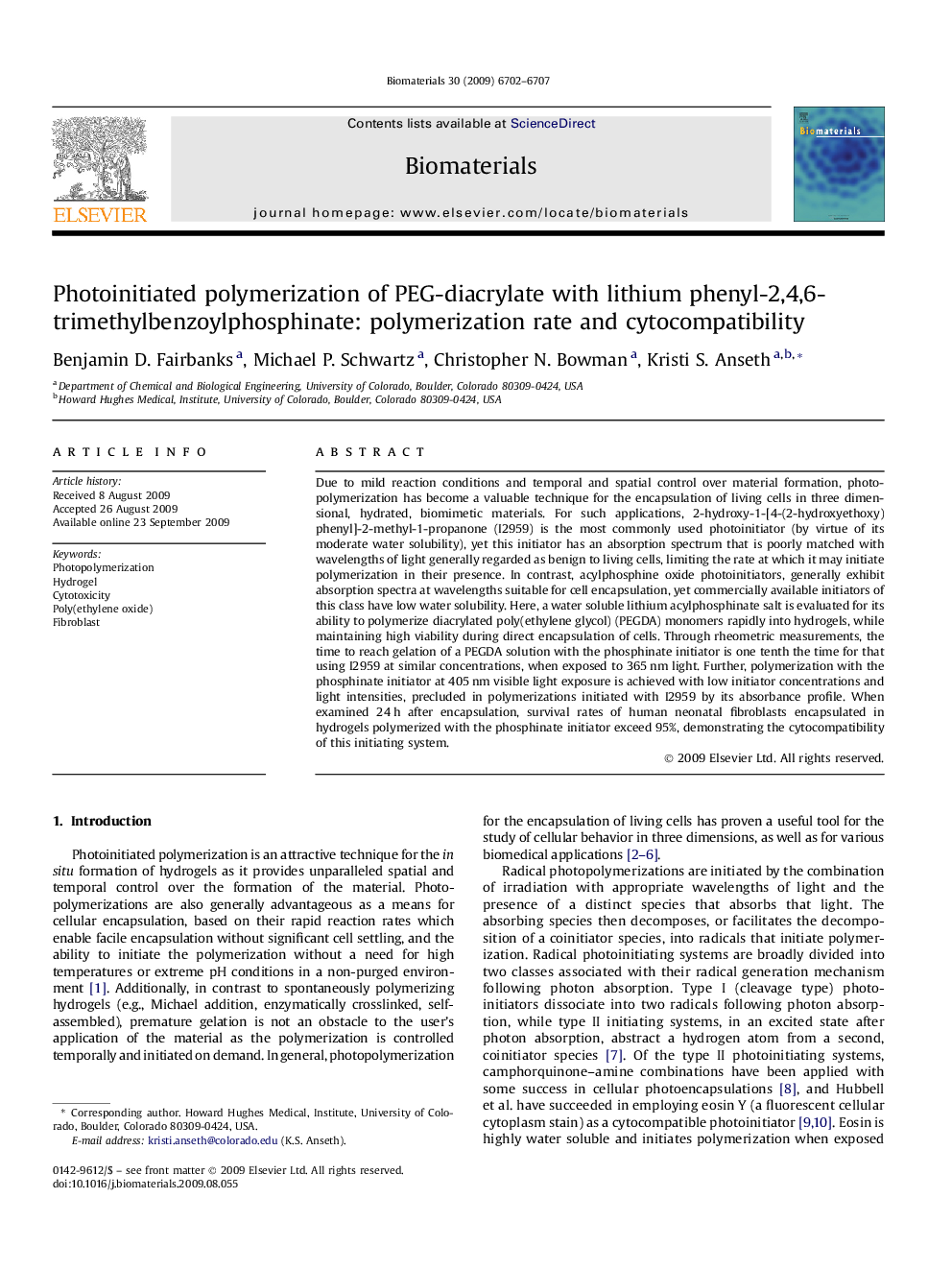| کد مقاله | کد نشریه | سال انتشار | مقاله انگلیسی | نسخه تمام متن |
|---|---|---|---|---|
| 8257 | 583 | 2009 | 6 صفحه PDF | دانلود رایگان |

Due to mild reaction conditions and temporal and spatial control over material formation, photopolymerization has become a valuable technique for the encapsulation of living cells in three dimensional, hydrated, biomimetic materials. For such applications, 2-hydroxy-1-[4-(2-hydroxyethoxy) phenyl]-2-methyl-1-propanone (I2959) is the most commonly used photoinitiator (by virtue of its moderate water solubility), yet this initiator has an absorption spectrum that is poorly matched with wavelengths of light generally regarded as benign to living cells, limiting the rate at which it may initiate polymerization in their presence. In contrast, acylphosphine oxide photoinitiators, generally exhibit absorption spectra at wavelengths suitable for cell encapsulation, yet commercially available initiators of this class have low water solubility. Here, a water soluble lithium acylphosphinate salt is evaluated for its ability to polymerize diacrylated poly(ethylene glycol) (PEGDA) monomers rapidly into hydrogels, while maintaining high viability during direct encapsulation of cells. Through rheometric measurements, the time to reach gelation of a PEGDA solution with the phosphinate initiator is one tenth the time for that using I2959 at similar concentrations, when exposed to 365 nm light. Further, polymerization with the phosphinate initiator at 405 nm visible light exposure is achieved with low initiator concentrations and light intensities, precluded in polymerizations initiated with I2959 by its absorbance profile. When examined 24 h after encapsulation, survival rates of human neonatal fibroblasts encapsulated in hydrogels polymerized with the phosphinate initiator exceed 95%, demonstrating the cytocompatibility of this initiating system.
Journal: Biomaterials - Volume 30, Issue 35, December 2009, Pages 6702–6707